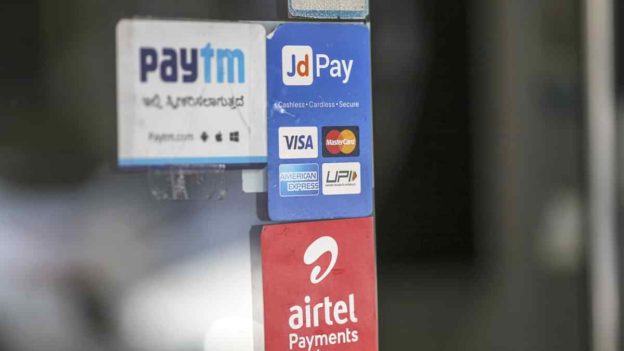Indian financial technology startups raised more venture capital money in 2021 than they have in any year before. From payments to cryptocurrencies and buy-now-pay-later, venture capitalists backed a host of companies looking to disrupt the traditional financial sector.
According to data from Venture Intelligence, Indian fintechs had raised $6.9 billion as of Dec. 15, compared to $1.6 billion in 2020. This is the highest on record.
“2021 saw a surge in platforms that tried to make infrastructure readily available for payments, lending, investments, and banking,” said Florian Reichert, partner and managing director at early-stage technology investment firm Picus Capital. “These platforms are aiming to make the ecosystem highly interoperable,” said Reichert.

Payments Still Top Of The Tables
Payment firms continued to attract the most money in 2021. At $2.7 billion, they cornered 39% of the total VC funding into the Indian fintech industry this year.
The continued dominance of payment firms is not surprising. Annualised payments across the country are at over $2 trillion, according to a Jefferies India Fintech report released this month. While cash continues to be widely used, its share of transactions dropped from 98% in 2015 to 89% in 2020, estimated Jefferies.
“The consumer side payments story is obvious now — PhonePe, GPay, and Paytm dominate it. The next boom is expected on technology that can innovate and open up more use cases,” said Amit Nawka, executive director, deals, PwC India. Companies like Razorpay, a payment gateway company, and Zeta, a card infrastructure provider, are among those who have raised funds this year.
“The primary goal isn’t just payment processing but to offer a wide range of services like loans, enabling e-commerce, and even banking,” said Abhishant Pant, founder of The Fintech Meetup. As such, companies like Khatabook, who can integrate financial services with simple bookkeeping, and BharatPe, which is focused on merchant payments have seen interest.
Caution On Digital Lending
B2B lending and consumer lending together raised $1.6 billion, according to Venture Intelligence data.
BNPL products have gained a lot of traction in 2021 because the model sits in a grey area of lending and payments, PwC’s Nawka said. While adoption has risen radically, there are concerns of high default rates.
“Due to the pandemic, a lot of algorithms and logics went for a toss because spending behaviour changed equally. And after two waves of the virus, the demand for credit was high,” he said. “NPAs should typically be at 2%-3%, but we’re seeing them go as high as 8%-9%.”
The Jefferies report notes that, the industry bounce rate is 5%-15%, and will need to improve if these products are to be ramped up.”
While BNPL gained traction, it now faces regulatory uncertainty. The RBI, in a recent report on digital lending, suggested that such products should be seen as on-balance sheet lending. This could mean slower growth in this segment in the coming years.
“The core digital lenders like MoneyTap, KreditBee, and Avail Finance are much better positioned,” Nawka said.
Insurance Gains
Insurance was the third largest funding category, raising $745 million.
On the insurance side, the adoption of digitisation multiplied this year, said Pant. Small-ticket insurance products have gained traction. From companies like Digit to Toffee Insurance and even non-bank finance companies like Bajaj Finserv are targeting this segment for growth.
However, growth in insurance may be more muted than in segments like lending.
Insurance is a push product, not pull, said Aman Jain, associate, Varanium NexGen Fund. And there’s a lot of mistrust among consumers because of too much fine print and complex claims processes, Jain said.
“Much of the current system is dependent on agents, who act like trust builders. The ideal innovation is to start comparing policies transparently online, and create an all-digital experience that can handle everything, claims to reimbursement,” Jain told BloombergQuint.
Betting On Crypto
Cryptocurrency startups raised $475 million despite lack of clarity on the legality of these tokens in India. While some venture capitalists are willing to take the risk, not all are.
Among the deals concluded this year was an investment by Andreessen Horowitz and others in CoinSwitch. Other investors like Tiger Global and Sequoia Global have also put their money behind India crypto firms.
The view on crypto is “not binary”, said Picus’s Reichert. There is a utility value to these tokens, he explained. For instance, the utility in cross-border payments is promising, he said.
Other funds are staying away for now.
“As a fund, we’re staying away from crypto-based investments because of regulatory uncertainty. Even the most progressive banks and institutions are double-minded about backing the sector,” Jain said. For fintechs, regulations matter the most, he added.
https://www.bloombergquint.com/amp/business/indian-fintechs-raised-a-record-amount-of-venture-capital-funds-in-2021





